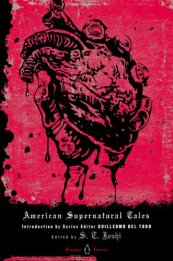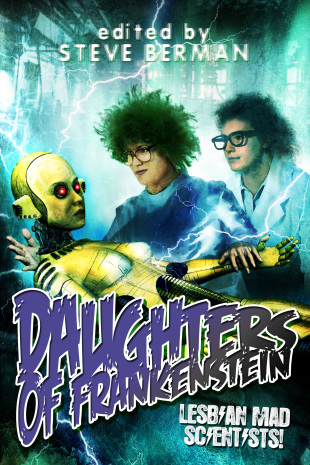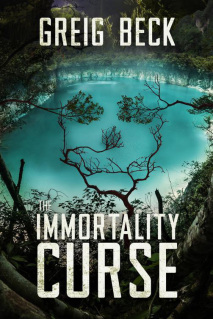Spotlight on Five Feminist-Minded Short Stories with Elements of Horror & Sci-Fi
Joyce Carol Oates once so perfectly wrote, “One criterion for horror fiction is that we are compelled to read it swiftly, with a rising sense of dread, and so total a suspension of ordinary skepticism, we inhabit the material without question and virtually as its protagonist: we can see no way out except to go forward.” This quote perfectly encapsulates why so many love the horror genre; it transports its reader to another world where one can observe, and be an entirely new entity, whether person, monster, witch, or troll. When you combine horror with the feminist short story, you enter a whole new realm that’s even more terrifying than any Pinhead from Hellraiser or Damien from the Omen. The horror delves into reality, where much can be hidden beneath the facade of such vanities as a life of wealth, the perfect marriage, or an idyllic community.
The tales below are a sampling of five feminist short stories that do indeed leave us with a “rising sense of dread” because sometimes, the horror is too personal.





Eau-De-Eric
Manuela Saragosa
In this thoroughly creative and universal short story, author and journalist from the BBC World Service (photo above) explores the strong connection between scent and memory, how a simple whiff can conjure and propel us back into the most painful of past memories.
We are privy to a snapshot into the life of Kathy and her young daughter Ellie one year post Kathy’s husband, Eric’s untimely death. When she brings home a resale shop teddy bear to her daughter, Ellie names the doll after her father citing a similar scent to which Kathy agrees, much to her dismay. As the story unfolds, the bear becomes a compulsively constant companion to the girl, complicit in her whispers behind closed doors. He seems to perpetually stare at the mother and her new boyfriend, communicating a feeling of ultimate betrayal, an emotional neglect as Kathy forges her new life. This new man, his presence betraying the memory of Ellie’s father.
In this shorter short story, Saragosa flawlessly commands and transforms the mood of the plot with only a few sentences, morphing the daughter from saint to sinner, the mother from dubious parent to survivor. The scent of the father, though comforting to Ellie, becomes reminder of the terror endured by the mother during their marriage. The smell becomes the personification of the dead man, inviting him back into the house as not only a bear, but possibly inhabiting the form of their daughter, an inescapable entity of memory now passed through the possession of DNA.
It’s the perfect short horror story–it’s a seemingly simple story that takes you on a subtle though impactful emotional ride that encompasses memory, single parenthood, death of a parent, and the complexities of grief.
from Six Scary Stories, selected and introduced by Stephen King
The Summer People
Kelly Link
Two years after reading The Summer People over a snowy Chicago winter weekend, the mystery and magic of the tale, written by short story maven Kelly Link still fills me with wonder every time it springs into my psyche. The basis is magically fantastic in every sense of the word. Similar to American Gods by Neil Gaiman, Link creates a world where many of us wish to live, where the ordinary is peppered with the extraordinary, living as one, though the extraordinary is often hidden to most.
The story focuses on its main protagonist, teenage Fran, caretaker of everything and one in her life–her father, her home, the people who vacation in their southern part of the US and the homes in which they stay. Fran is a tough cookie; she’s weathered so much burden throughout her life, including an absentee mother, an unreliable and alcoholic father, and the knowledge of necessity. Fran knows that if she doesn’t keep up the adult responsibilities for her father, no one will, including the care of their otherworldly summer inhabitants who keep Fran’s mother, father, and now Fran captive by location. They are both blessed with the presence of magical beings who care for the family, and damned by them as their perpetual caretakers.
Link entwines the complicated plight of a lower income, broken family expressed through the steadfastness of a young woman and the whimsical quirks of the Summer People. Though Fran has grown weary of their antics with slight sprinkles of amusement, the readers learn of their supernatural abilities as they gradually unfold to Fran’s friend Ophelia. Almost by happenstance, Ophelia innocuously inserts herself into Fran’s life and naturally that of the Summer People, unknowingly entering into a world which may cost her more than her curiosity.
from Get in Trouble: Stories by Kelly Link
In the Water Works (Birmingham, Alabama 1888)
Caitlín R. Kiernan
Ireland native Caitlín R. Kiernan is so damn fascinating that it can’t help but steep into her writing. Aside from her fiction career she has been a professor, having studied zoology, geology and paleontology in addition to publication in various scientific journals. In the Water Works (Birmingham, Alabama 1888) reflects that respect for all that is old and of the earth by its setting, late 1800s and the unspoiled, soon to be colonized land of Alabama during that time period.
The story begins with an introduction to Henry S. Matthews, professor of geography and math who’s painted as a solitary, quiet man with a calm mind only stirred by fossils and the primitive. He picks through the strewn aside “antediluvian seashore in hardened bits and pieces” that the workers unintentionally unearth, armed with axes that bore through the Red Mountain to bring industry and water to Birmingham. The miners, referred to as “hard men” view Matthews as some curious creature that he himself surveys from the ground as he tags along during their work to reap the underground gifts. The mostly silent relationship eventually turns into one of ominous kinship as something is unearthed deep in the Red Mountain. Matthews is called to witness this unknown thing, lurking in what may should not have been disturbed.
Throughout the story Kiernan’s descriptions of mud, mountains, rocks and earth mirror that of a living being; nature itself is a body of organs, blood and bones. Kiernan expertly uses such personifying phrases to set her mood: “iron-ore bones…Appalachia’s long and scabby spine…fresh wound, these walls, this abscess hollowed into the world’s thin skin…” The tenor throughout the story is completely intoxicating; it’s dark, it’s wet, it’s cold, it’s eerie, it’s grey and unknown; “the autumn sky growls…” It’s everything you want in a short story, leaving an unforeseen punch that becomes part of your psyche. Bookmark it in your collection, or if from the library, make a copy and keep it near. You will never again look at the reaping of the earth the same again.
from American Supernatural Tales, edited by Guillermo del Toro (among others) and can also be accessed via Google Books here.
The Lady of the House of Mirrors
Rafaela F. Ferraz
Portugese author and natural history buff Rafaela F. Ferraz reimagines Mary Shelley’s Frankenstein where our traditional Victor is Rosie, the recent inheritor of the store Dolls for Dreamers, where unique and sometimes supernatural dolls are crafted for the wealthy. Aided by her Igor (Theo), they set out to create a companion for an eccentric shut-in, the woman known as the Lady of the House of Mirrors. While they typically sculpt with clay and brass, this time they seek a human body to equip with the workings of a robot, a dead though living doll who is able to manage not only servitude, but also conversation.
We don’t know a lot about time frame, location of the story or much about Rosie’s past, but the crumbs gathered give way to glimpses of a world of awe. The upper class has seemingly cut themselves off from a seedy underbelly where Rosie’s workplace resides; there are bodies being sold for wings, young dead men in corsets, missing limbs and glass eyeballs. The world created by Ferraz is one of evocative imagery, all of which serve to create a highly sensual locale. Besides the allure of this new world, the real meat of the story lies in Rosie– the creation of a complicated, sometimes flawed and confused human being. A renown business on her shoulders, trying to fill the shoes of a genius inventor whose prestige may be unattainable.
The ending is ambiguous, leaving you with more questions than answers and much like the world of the house of mirrors itself, at its conclusion you are left in a state of wonder, which is consistent with the vibe of the story. Prior to viewing the tv show, Twin Peaks: the Return I may have yearned for that Hollywood ending, but Ferraz creates a Lynchian twist where the reader can inhabit a space where they both ponder the possibilities while accepting the mystery of that which may not be explained.
from Daughters of Frankenstein: Lesbian Mad Scientists! edited by Steve Berman
The Sleep of Plants
Anne Richter
The Sleep of Plants, written by Belgian author Anne Richter details the life of “she,” our protagonist who willfully transitions into a plant, seeking silence through a world of observation. Similar to In the Water Works, we see repeated allusions to nature, the inextricable connection between humans and the natural world and how one cannot removed from the other.
Our protagonist, “she” lives quietly with her mother and spends the majority of the story reflecting on how she seeks a life of solitude. The vehicle for this solitude manifests itself as the desire to transform into a houseplant and begins her metamorphosis by “planting” herself into a pot of soil. Her mother, upon finding her daughter upstairs in a flower pot, seems to decide to ignore the dirty secret and avoids her altogether. “She’s” fiance finds her and brings her water and food in the form of insects. Eventually, she transforms into a being that exists on water and sun, living as one that contently observes and never speaks.
Published in 1967 shortly following the advent of second wave feminism, The Sleep of Plants is reminiscent of Chantal Akerman’s film, Jeanne Dielman, addressing themes of solitude, boredom of the middle-class woman woman during the 1960s, and depression stemming from the pressure of expectation; to be a social being and marry against one’s will, in this instance. The story is compelling in its ingenuity, curious and somewhat confusing, all making it a great slice of life to ponder what the hell is going on. For an introvert, the idea of morphing into a plant sounds more like heaven than horror, but who’d want to eat all of those bugs?
from Sisters of the Revolution: A Feminist Speculative Fiction Anthology, edited by Ann and Jeff Vandermeer
Part 1 can be viewed here.
Part 2 can be viewed here.
Advertisements Share this:




